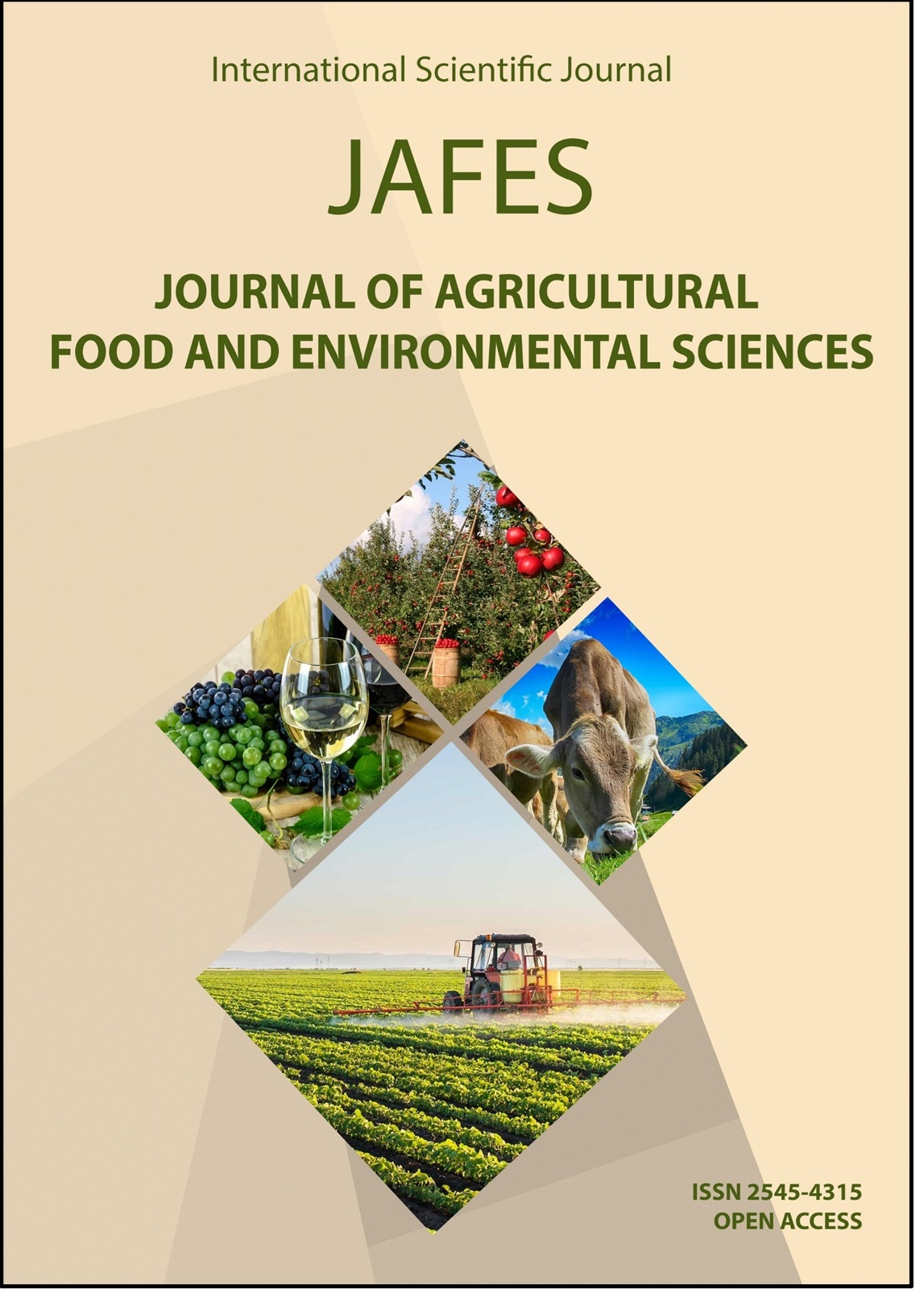INVESTIGATION OF ORGANOLEPTIC CHARACTERISTICS OF POMEGRANATE (PUNICA GRANATUM L.) VARIETIES
Клучни зборови:
Anthocyans, phenols, flavan-3-ols, aril, flavor.Апстракт
Investigation of organoleptic characteristics and determination of some biochemical compounds content in the fruit of eight traditional pomegranate (Punica granatum L.) varieties and types: Lifanka, Bejnarija, Karamustafa, Ropkavac, Valandovska kisela, Lifanka clone, Zumnarija and Hicaz, from Valandovo area (North Macedonia), was performed. Fruit from Valandovska kisela and Hicaz varieties are characterized with the lowest value of pH and also with highest content of citric acid. The content of fructose sugar prevails over the content of glucose in 1,1 ratio. Anthocyans are the most common in fruits from Hicaz variety. The Valandovska kisela variety has the highest content of phenols. The fruits from Ropkavac and Zumnarija varieties have the highest content of flavan-3-ols which give them a characteristic flavor. According to organoleptic evaluation of external fruit appearance, the best ranked is the Karamustafa variety. According to the internal characteristics, i.e. the fruit aril, again stood out as the best the Karamustafa variety, by all parameters. The respondents are pointed out also Ropkavac and Bejnarija varieties in evaluation of aril flavor and aroma, such as very good varieties, especially by the aril juiciness. According to all organoleptic (external and internal) characteristics, the highest ranked is Karamustafa variety which is recommended as a perspective variety of pomegranate for spreading in R North Macedonia.



